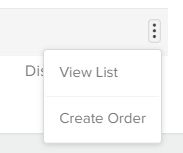Watch: B2B Buyer Accounts
Learn how to manage B2B buyer accounts, including creation, approval, and configuration

Create an Account
New accounts are created with some initial configurations. To begin creating one:- Go to Main > B2B > B2B Accounts.
- Click Create Account in the top right.
- This will open the initial account configurations, separated into sections for Company and Admin User Information.
- In the Company Information:
- Enter the Account Name.
- Select the Site catalog that this account should use.
- Toggle Tax Exempt on if appropriate.
- Select a PriceList if you want the account to use that specific price list rather than resolving to a price list via segment.
- Select any Segments that are applicable to the account.
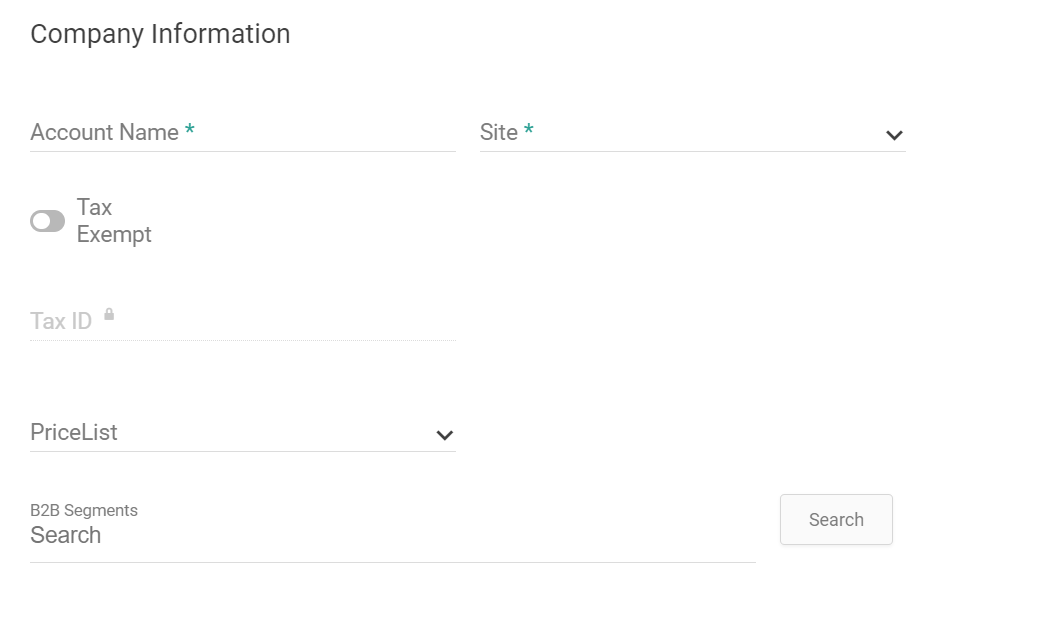
- In the Admin User Information:
- Enter a First Name, Last Name, and Email. This user will be set as the account administrator by default, and will receive an email with a link to set their account password once the account is activated. The maximum allowed length of email addresses is 254 characters.
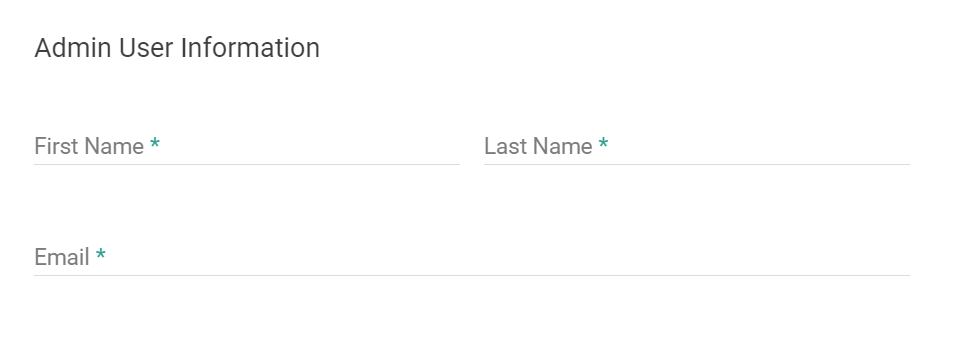
- Enter a First Name, Last Name, and Email. This user will be set as the account administrator by default, and will receive an email with a link to set their account password once the account is activated. The maximum allowed length of email addresses is 254 characters.
- Click Save in the top right of the page to create the initial account. To continue configuring the account with further settings, you can edit it as detailed in the following section.
View and Edit Existing Accounts
To view and edit an account, either click its entry in the B2B Accounts table or click Edit from the drop-down menu on the far right. This will open a details page with the full account settings.
Account Status
The account’s current status is displayed in the top header. If a new account is currently Pending Approval, then it can be confirmed or rejected in the top left by expanding the drop-down menu and clicking Approve or Deny. If the account is already approved, you can deactivate it by expanding the drop-down again and switching the status to inactive. When approving a pending account, you will be required to assign a sales representative to it. See the Types of B2B Users guide for more information about the Users and Sales Reps sections of account details and how to manage them.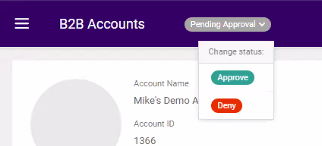
General Information
This is the basic information that was set when creating an account, including the name, tax status, account priority (used for order release), and any segments or price lists. Additional general information is also displayed at the top of the account details page, above the configuration tabs: the lifetime value, the date it was created, the current purchase order amount, and more.Account Hierarchy
The Account Hierarchy section displays the parent-child relationship structure for B2B accounts, helping admin users understand organizational structure at a glance. Click the expand icon next to the section header to open the hierarchy in a modal for better visibility. The same complete hierarchy is displayed regardless of which account in the hierarchy you are viewing.
Click the expand icon next to the section header to open the hierarchy in a modal for better visibility. The same complete hierarchy is displayed regardless of which account in the hierarchy you are viewing.
Quotes
This section is a log of the quotes that have been created for the B2B account. A seller can click Initiate Quote to be directed to the storefront and begin creating a new quote for the B2B account. The full history of all quotes that have ever been created for the account can be viewed on the seller view of the storefront. See the Quotes guide for more information about this feature.
Addresses
This section contains all of the available addresses and other contact information that buyers can use when making orders for the B2B account. Click the pencil icon next to an Address ID to edit an existing address, or click the X icon to remove it instead.
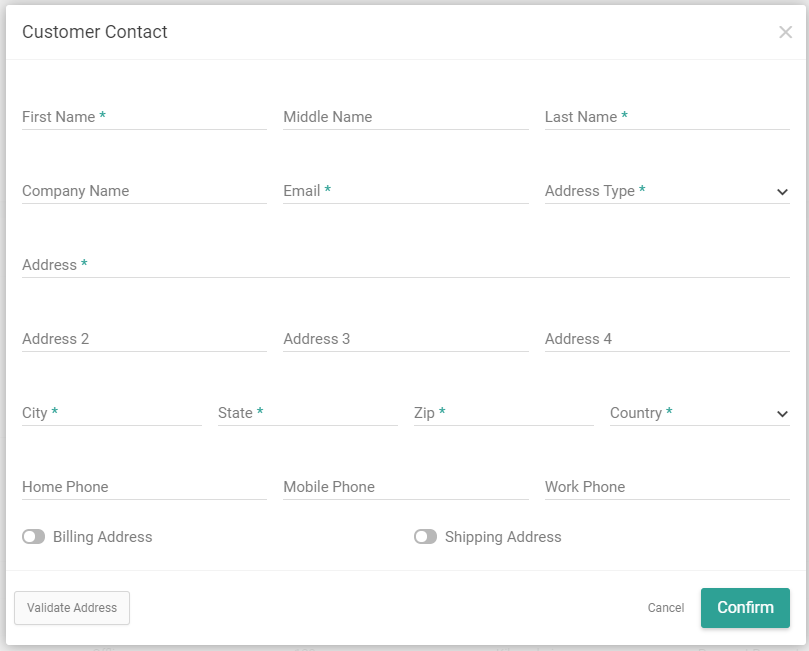
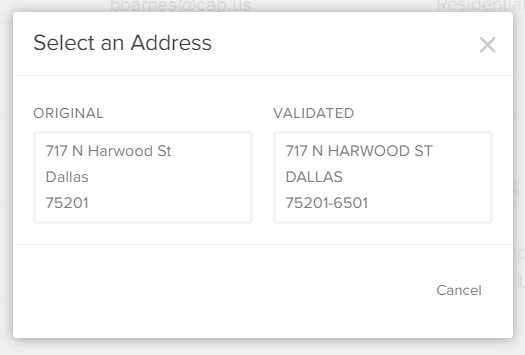
Payment Information
The payment information includes settings for the credit limit and overdraft allowance, and displays the current available purchase order balance of the B2B account. A history of all purchase order transactions is also included. Enable or disable purchase orders for this account by clicking the toggle in the top right, as long as purchase orders are first enabled as a payment type for the site under System > Settings > Payment Types.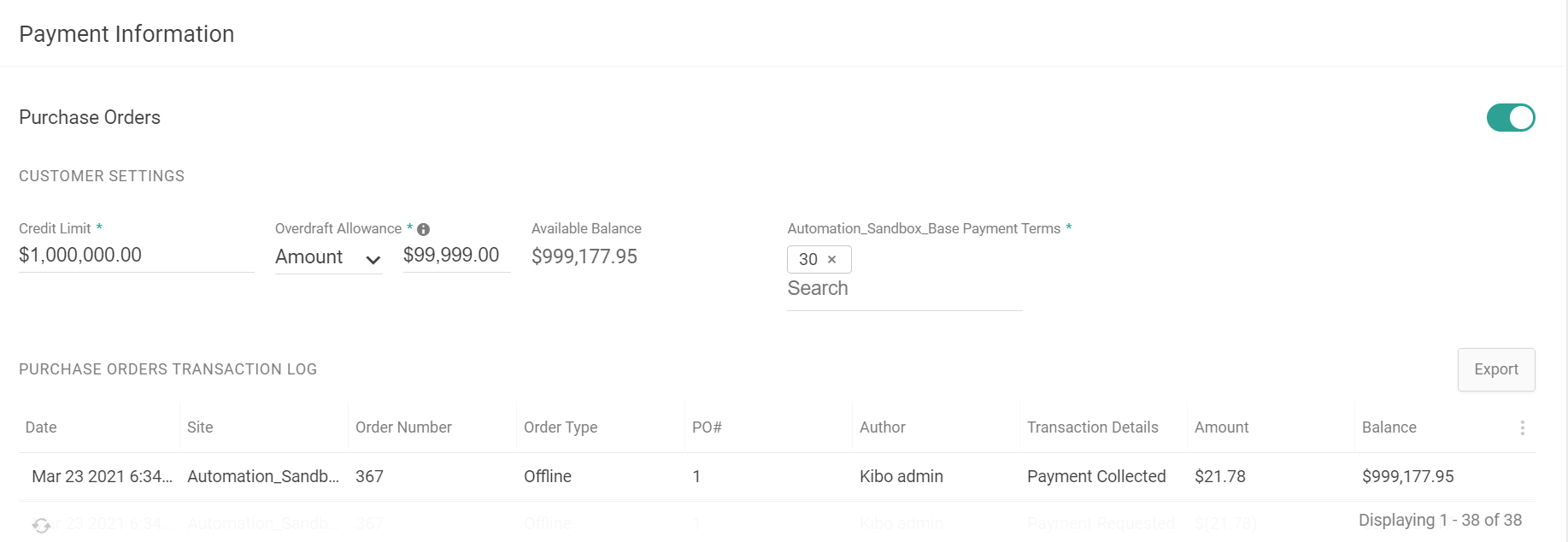
Order History
The order history displays all orders that have been submitted by buyers from this B2B account. Click an order in the table to view its details.
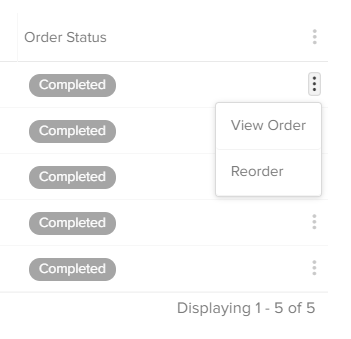
Audit Log
The audit log provides an audit history for the Purchase Order account settings.
Lists
Lists are products that buyers of the B2B account may want to order. You can create lists on the customer account-level and the wider B2B account-level, which will expose the list to all B2B buyers (including non-purchasers).

